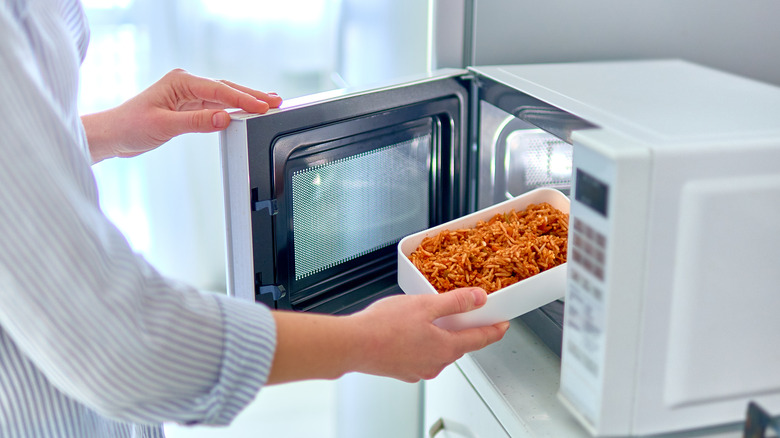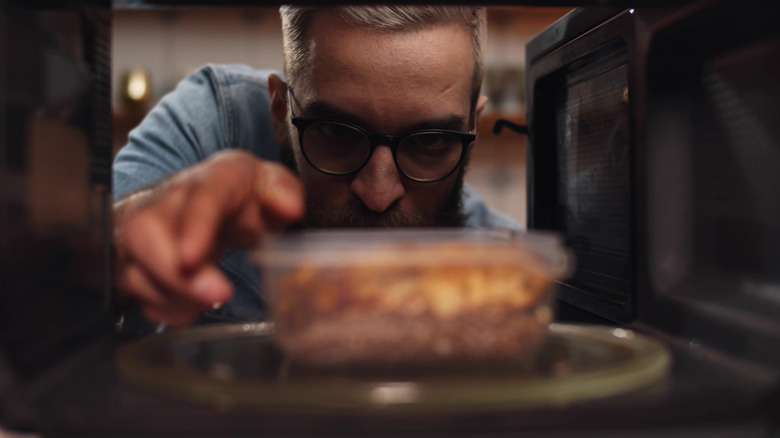This Is How Microwaves Actually Work
In September, TikTok became enraptured with a hack popularized by lifestyle vlogger Emily Mariko. The hack, as she shared in a video, was that she would bring her rice to the point of perfect fluffiness by microwaving an ice cube placed on top of the rice bowl. The most amazing part, though, was that the ice cube didn't instantly melt into a heated, tasteless soup.
What the hack also tells us is that many of us don't really understand how microwaves work. Obviously, we know that microwaves do work, but our idea of how they work seems to be that they just do somehow.
Fortunately, Culinary Lore provided an explanation. The microwave machine emits microwaves into your food. Once it strikes the food, the waves get absorbed by any water present. They then cause the water molecules to rotate faster, which creates the heat that cooks the dish. The different patterns in which microwaved food heats are due to the amount of moisture present in the dish. The example Culinary Lore gives is a meat pie. The interior heats much more than the pastry because the pastry has barely any liquid while the filling has loads. If the dish is more uniform in its moistness, the exterior will cook quicker than the interior because that is the part first exposed to the microwaves.
What does this mean for your food?
So now we have a basic understanding that dispels the magic of using the microwave. But how does this apply to our day-to-day cooking?
For one thing, it provides the basis to understand Emily Mariko's ice cube hack. While ice cubes consist of water, they are examples of water frozen solid, which means that they have a different molecular structure. Instead, The Naked Scientists explained that the energy goes into breaking the structure or, in other words, melting the ice cube into a water that can absorb the microwaves. This takes a lot of energy, though.
Similarly, it also explains why a lot of food doesn't taste particularly good after it has been microwaved. In a piece about thawing fish, Bon Appétit admits that you could simply chuck the fish into the microwave. However, it would mess with the texture and cook the fish unevenly. The same goes for meats, vegetables, and most other foods. Because the energy passes into and heats the food via the water, you cannot evenly cook a dish in a microwave. It will always be a slightly haphazard mess.

